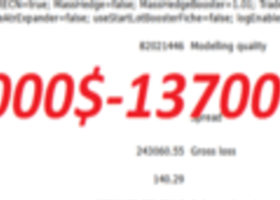
On Thursday gold remained in a positive territory, as markets estimated a series of U.S. data on initial jobless claims, consumer price inflation and durable goods orders.
On the Comex division of the New York Mercantile Exchange, gold futures for April delivery jumped $13.40, or 1.12%, to trade at $1,214.90 a troy ounce during U.S. morning hours after hitting an intraday high of $1,219.80, the most since February 19.
Yesterday gold tacked on $4.20, or 0.35%, to settle at $1,201.50. Futures were likely to find support at $1,190.00, the low from February 24, and near-term resistance at $1,222.90, the high from February 19.
The number of individuals filing for initial jobless benefits increased by 31,000 last week to 313,000 from the previous week’s total of 282,000, according to the U.S. Department of Labor. Analysts had expected initial jobless claims to rise by 8,000 to 290,000 last week.
Also, the U.S. Department of Labor said that consumer prices declined 0.7% last month, compared to estimates for a decline of 0.6% and following a drop of 0.4% in December.
Core consumer prices, excluding food and energy costs, increased 0.2%, above expectations for a 0.1% increase. Core consumer prices were flat in December.
Other data showed that total durable goods orders, which include transportation items, increased by 2.8% last month, above expectations for a gain of 1.7%.
Core durable goods orders, excluding volatile transportation items, inched up by 0.3% in January, disappointing forecasts for a 0.5% gain.
At the same time, weakened greenback boosted the demand for gold, as recent comments from Federal Reserve Chair
Janet Yellen prompted investors to push back expectations for a rate
hike in the U.S and thus weakened the dollar.
In the meantime, silver futures for May delivery rallied 27.8 cents, or 1.69%, to trade at $16.75 a troy ounce. Prices jumped 24.1 cents, or 1.48%, on Wednesday to close at $16.47.
Copper for May delivery inched up 3.6 cents, or 1.36%, to trade at a six-week high of $2.680 a pound amid ongoing expectations for further easing measures in China, which is the world’s largest copper consumer, accounting for almost 40% of world consumption last year.


